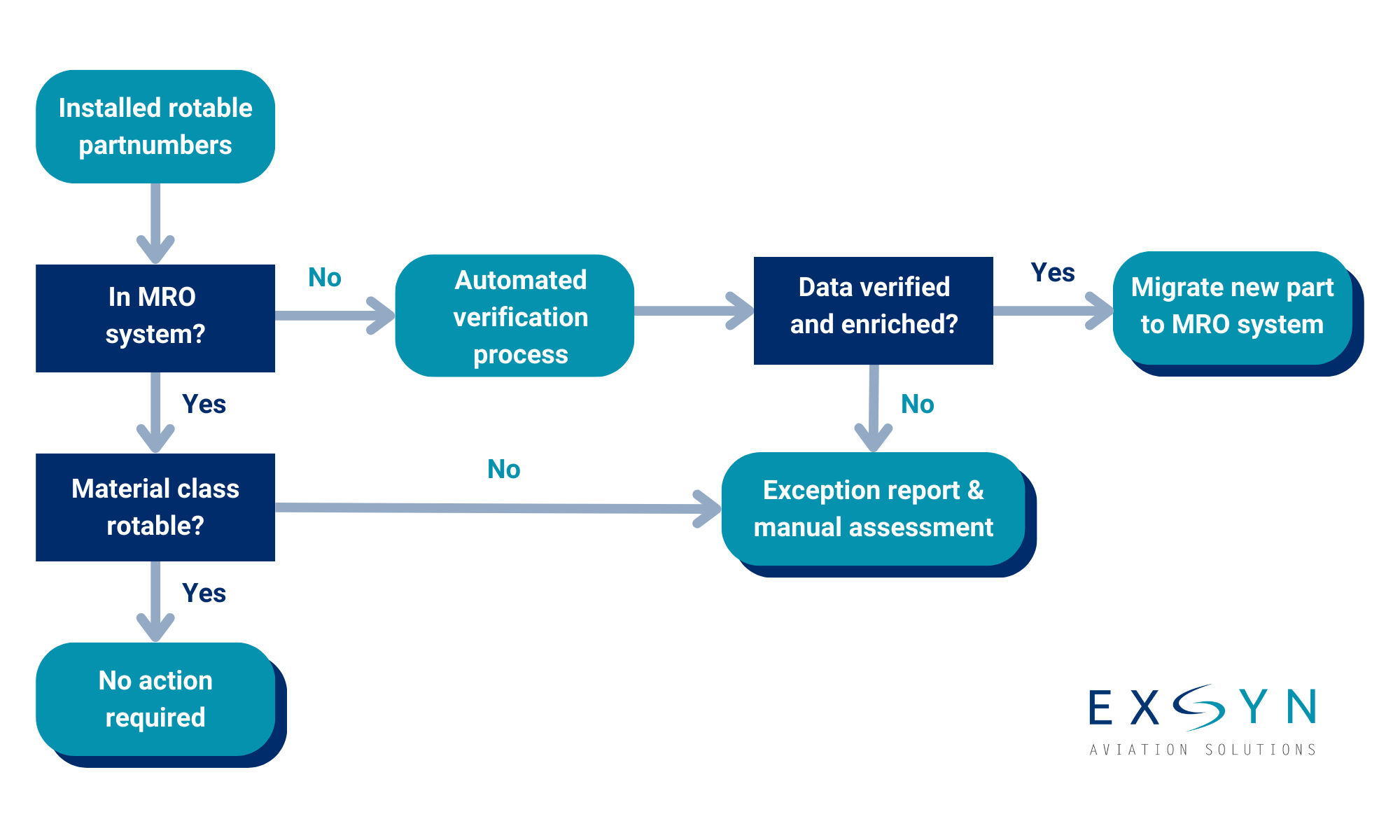Aircraft Phase-in series: How to setup parts data?
In the first blog of the aircraft phase in the series, we discussed the initial aircraft setup in an M&E/MRO system. In this second blog, we will discuss the setup and configuration of the part numbers and anything that directly relates to them. The parts setup can be seen as a preparation to further enable the actual setup of the installed components and their maintenance data.
Each MRO and airline operator defines and interprets part number data differently. It is therefore common to see differences and conflicts when migrating data from A to B. When an aircraft phase is a returning event in your operation, it is important to define a standardised process to introduce new parts to the M&E/MRO system.
The setup of the part number data will impact all future inductions as well as other processes in the M&E/MRO system; this might not be relevant from an engineering perspective but might be from a logistics/stores perspective. It is therefore recommended to involve all relevant departments initially in order to understand how each decision will impact another process in the system.
Preparation tasks
Prior to setting up the parts data, it needs to be ensured that the system has the basic infrastructure setup required to accommodate new parts in the system. It is assumed that the preparation tasks for the aircraft setup discussed in the first blog are already in place by now. Additional items that should be in place:
· ATA chapter definitions
· Aircraft position definitions (e.g. LH/RH)
Additionally, it is recommended to obtain reliable part number source data, ideally digitally. This would, for example, be the IPC, CMM, and other part catalogues provided by vendors for the aircraft type in question. It is very common that during an aircraft phase, minimal data is provided for the installed parts. By having these additional reliable sources, data can be enriched and cleansed before it enters the new system. These enrichment, cleaning, and verification steps can be automated with the right tools.
Such an automated process will look as shown in the below flow diagram.
The unique part numbers are provided in the script.
The script compares it to the MRO system to determine if the part is already present.
If not, the script will retrieve the data from the digital sources if they are available.
If present, no action is required during the verification step. The script will continue to check that the part is also setup as an actual rotable part in the system in order for it to get fitted to an aircraft.
Once the unknown data is verified and enriched, it can be transferred to the MRO system.
If the data is still not found in the sources, it should be manually assessed to determine its validity and properties.
Note: Such a process is not limited to an aircraft phase in. It can be applied to any introduction of new parts to a M&E/MRO system or verification of existing parts in an M&E/MRO system.
What data sets are required for part number data creation?
Let’s now discuss the minimum required data sets related to the setup of part number data and why it is required to have them.
Most of the mandatory required data properties are needed for parts tracking and (reliability) reporting. Next to the very obvious properties such as the part number itself we are talking about the following properties:
Part description
Material class (Rotable or Consumable)
ATA chapter
Alternates/interchangeability data
The above properties can mostly be derived from the digital sources with exception of the material class. This can vary for certain operators, although in the majority of cases they will agree with these definitions.
Other data to consider
Other less critical data sets which are also considered part of the parts setup are as follows:
Remarks/Additional descriptions/Notes
Position codes (indicates at which aircraft positions it can be installed)
Aircraft type assignments (Determines for which aircraft types the part can be used)
Special codes
Supplier information
Price information
Unit of measurements
These are mostly items which can also be setup at a later stage and are non-critical to the initial aircraft setup/phase in.
How to avoid common pitfalls
There are a some common pitfalls that can be avoided when setting up new aircraft parts:
Obtaining high quality and reliable part number source data.
Introduce an automated process for verification and the introduction of new parts to your MRO system.
Understand and be aware how certain part setup decision can impact other modules of a system.
What is next?
In the next blog of aircraft phase-in series we will be taking a closer look at the installed component setup and all related topics that need to be considered for a successful aircraft phase-in to a new system.
Aircraft phase-in series:
✓ Aircraft setup
✓ Part number administration
Installed components
Maintenance program
Modifications & Documents
Extras
How EXSYN can help
EXSYN's team of aircraft data and aviation experts utilize a proven framework and methodology that has been applied to millions of terabytes of master data and includes:
EXSYN’s NEXUS solution to reduce project costs and duration
EXSYN’s data warehouse to accelerate your phase-ins
Set up the best strategy for your situation based on years of experience with any aircraft type
Migration of both structured and unstructured data
ISO 27001 data security certified migration approach

